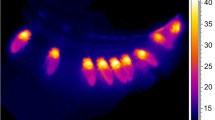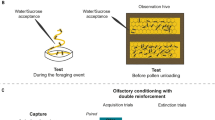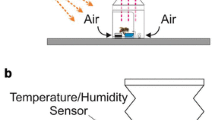Abstract
When conditioned honeybees collect sucrose solution delivered at a range of low-profit flow rates for the hive, they increase the pause length between successive visits. If sucrose solution was delivered continuously, it accumulated at the food source in an amount proportional to the pause length and the flow rate of nectar. When the flow rate of sucrose solution was further decreased but kept constant throughout the day, a threshold level was attained in which oscillations in the length of the pauses were observed. The relationship between the amount of accumulated nectar and subsequent pause length at this threshold level can be depicted by means of a power function. The best fit allowed the calculation of the values of parameters that quantitatively describe the control system regulating foraging activity. The importance of foraging pauses as a strategy to cope with changing nectar availability is discussed.
Similar content being viewed by others
Author information
Authors and Affiliations
Additional information
Accepted: 7 January 1998
Rights and permissions
About this article
Cite this article
Grosclaude, F., Núñez, J. Foraging pauses and their meaning as an economic strategy in the honeybee Apis mellifera L.. J Comp Physiol A 183, 61–68 (1998). https://doi.org/10.1007/s003590050234
Issue Date:
DOI: https://doi.org/10.1007/s003590050234




